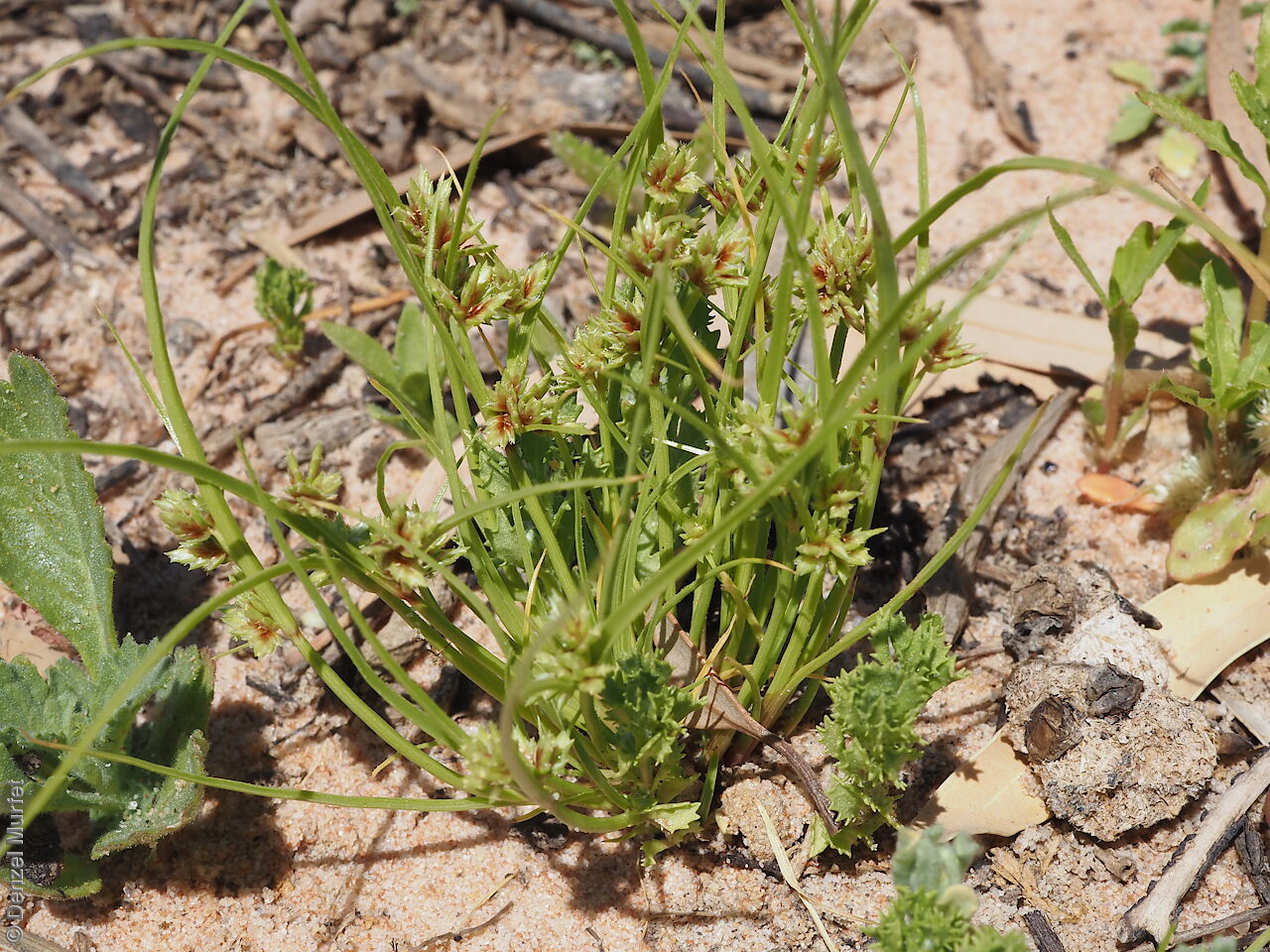
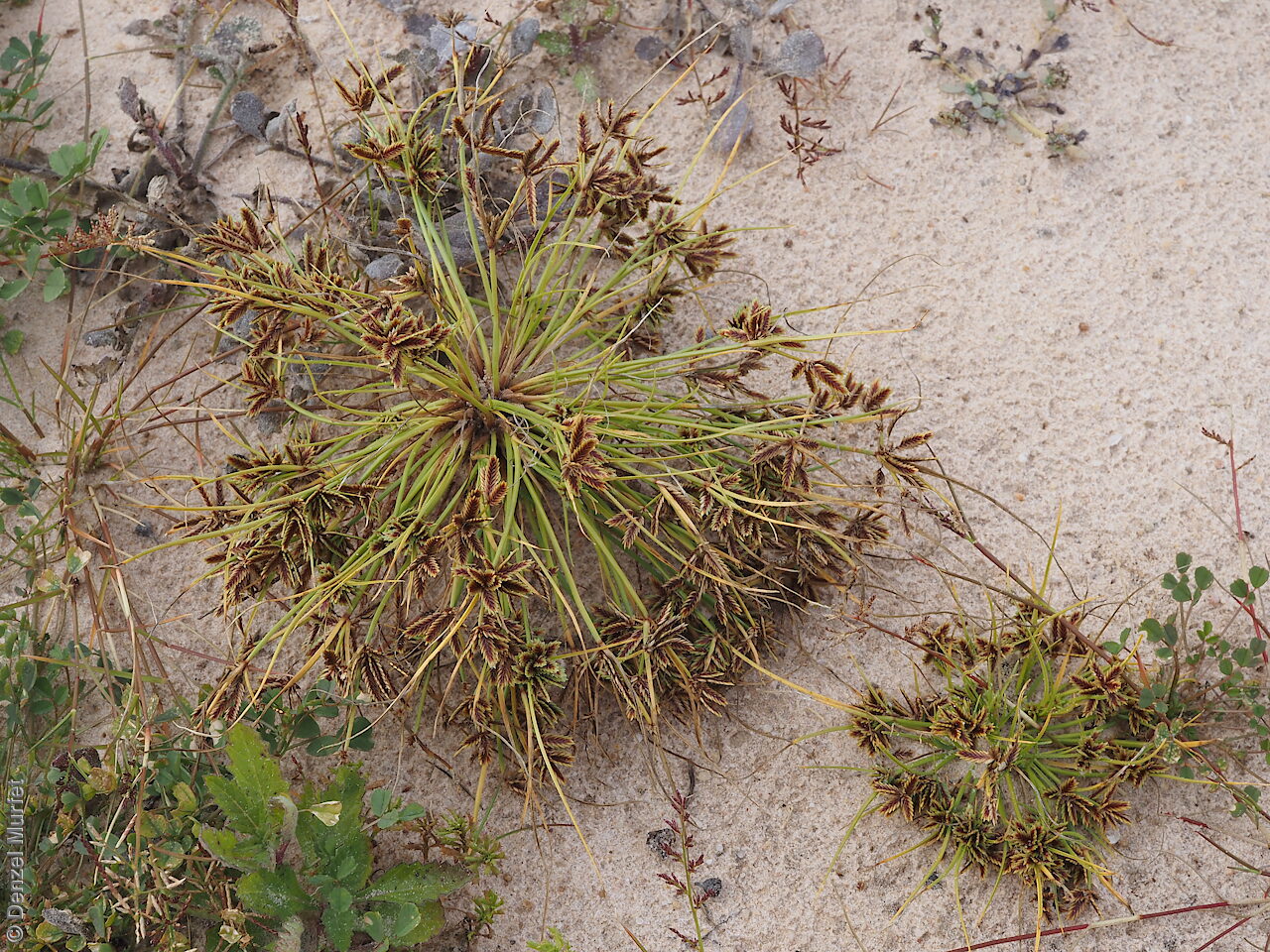
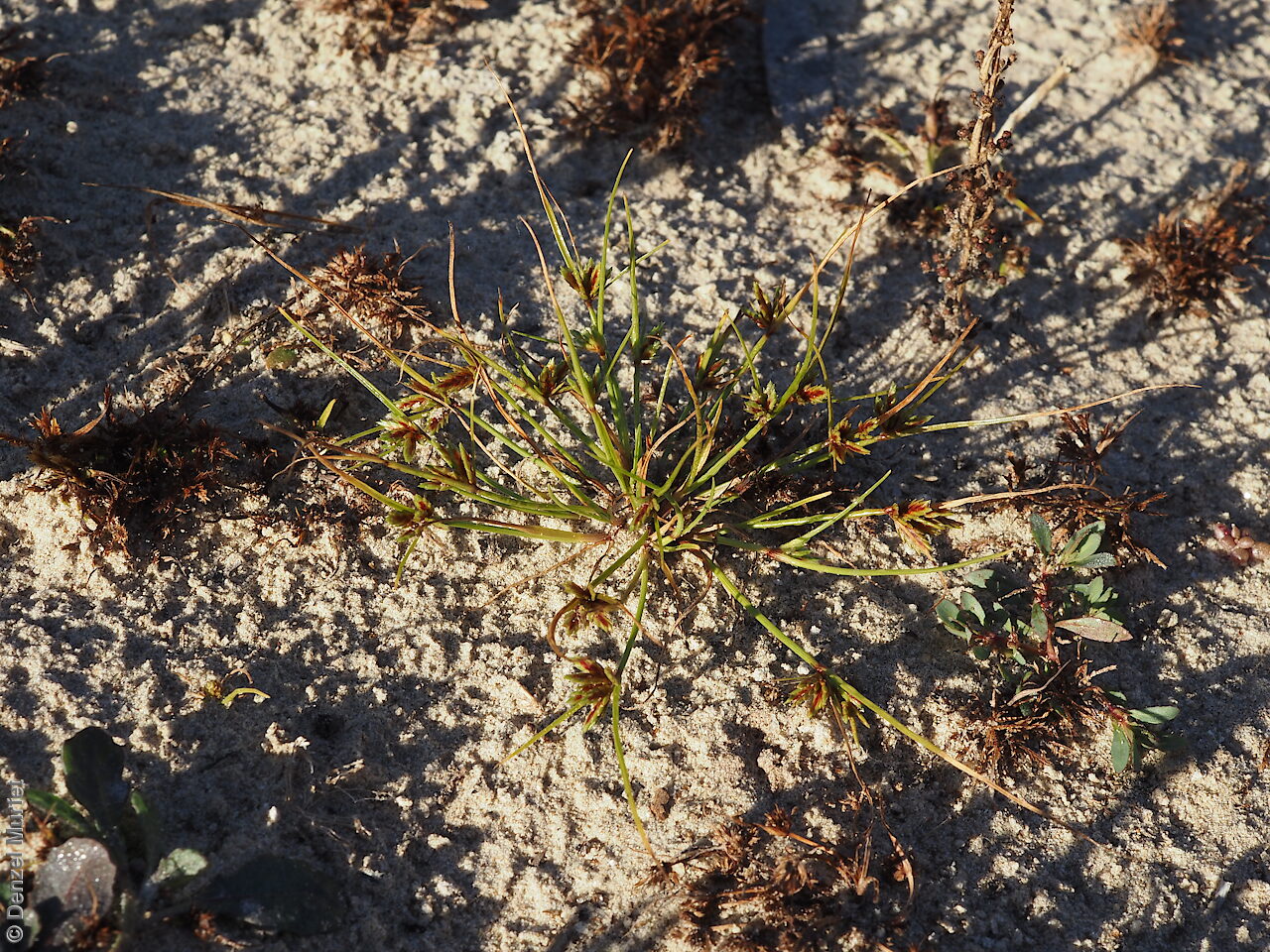
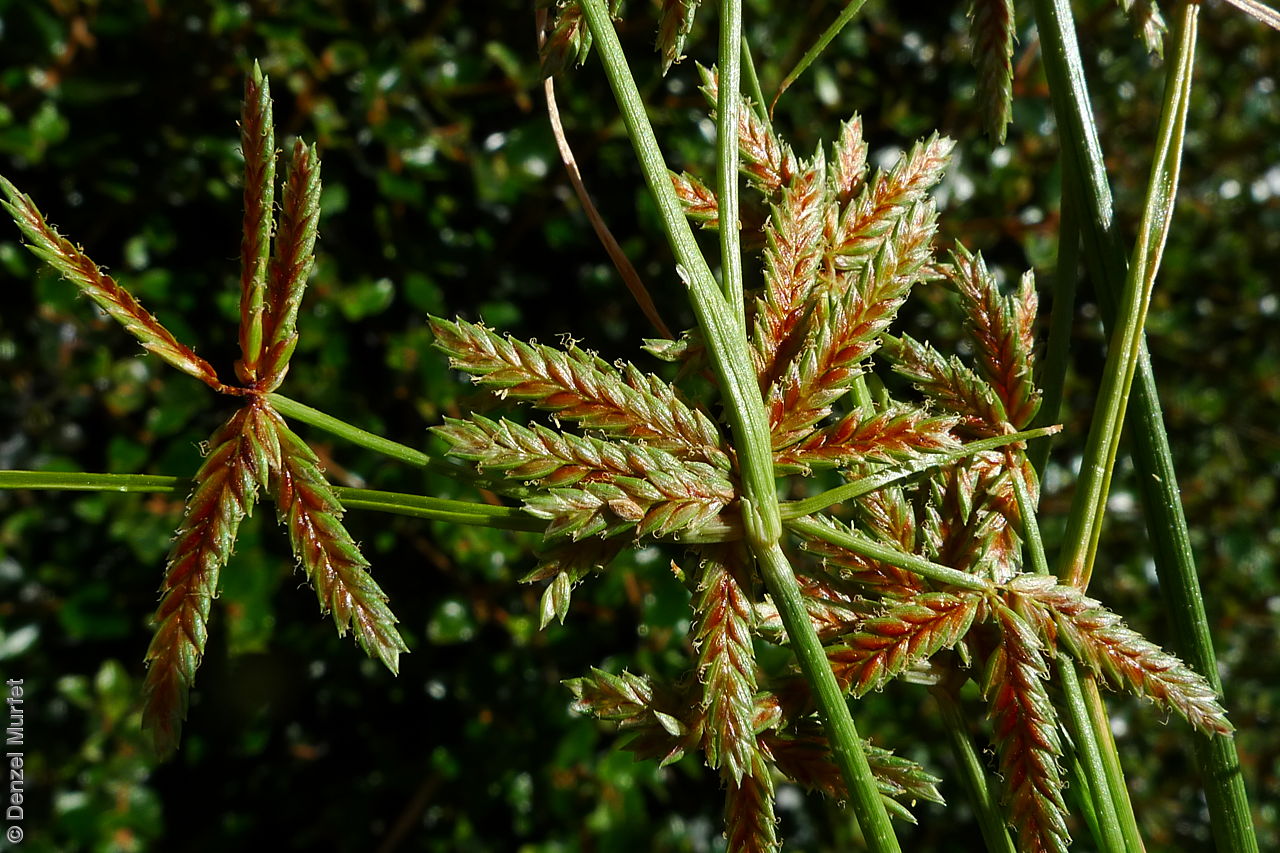
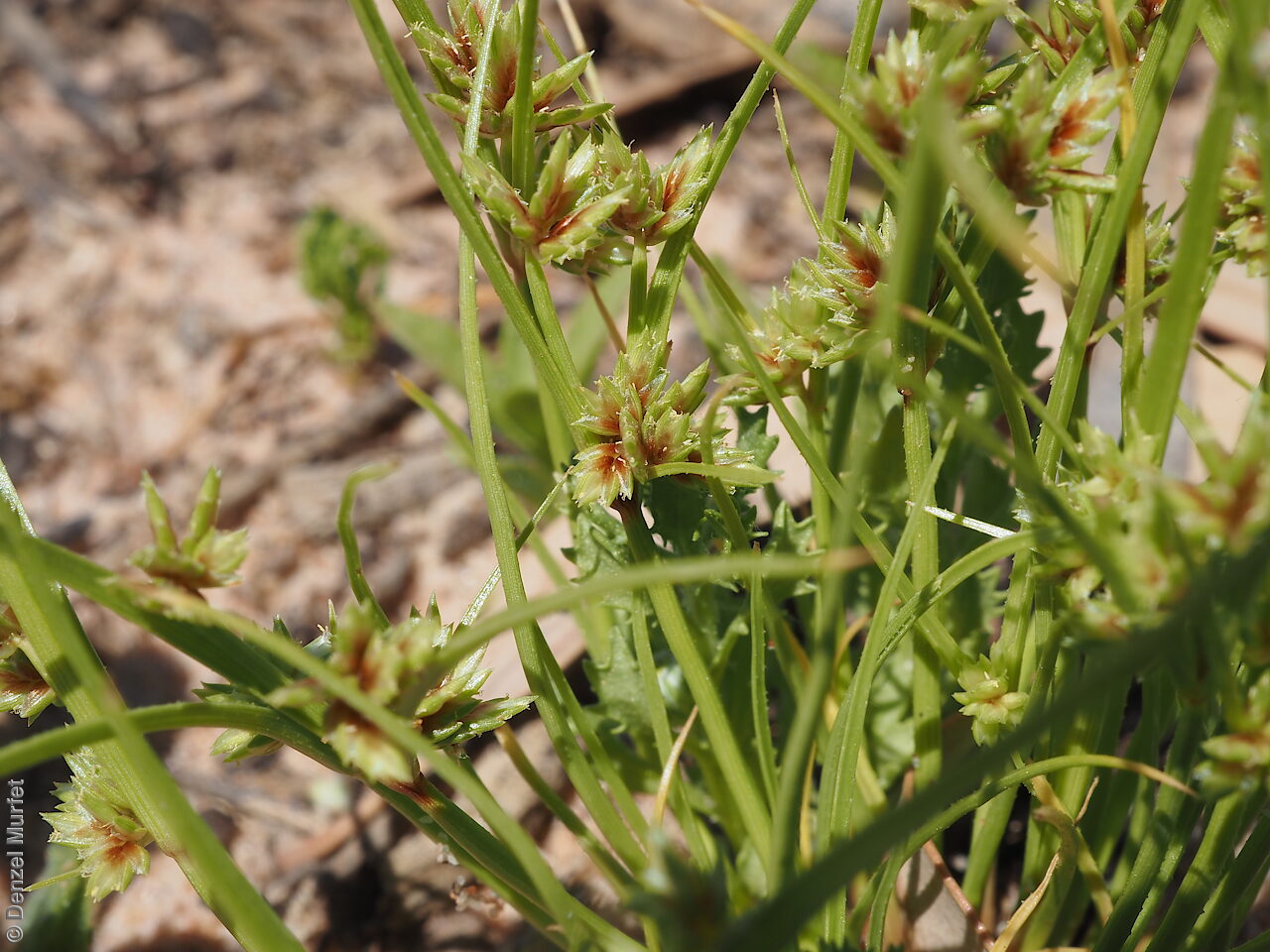
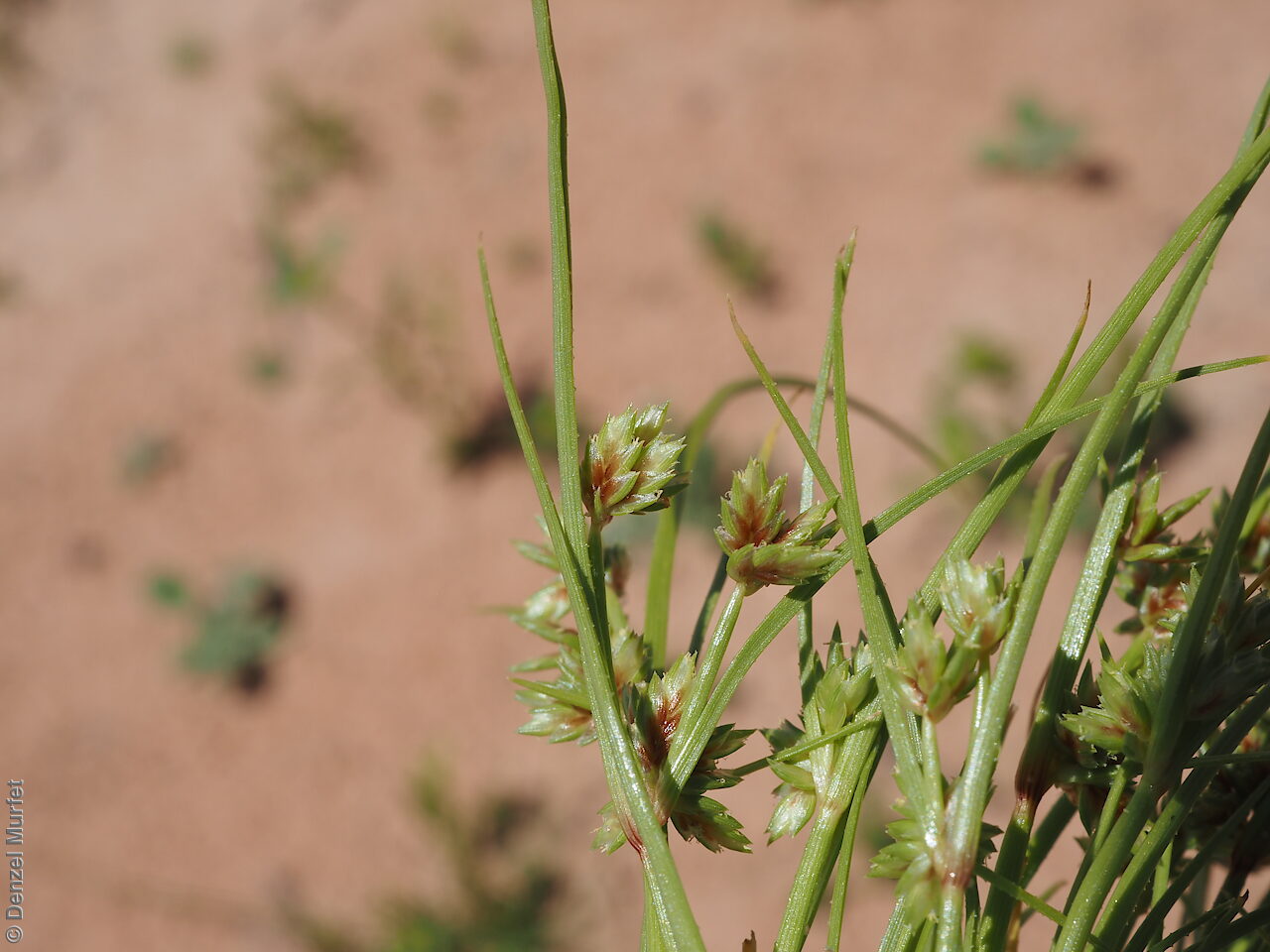
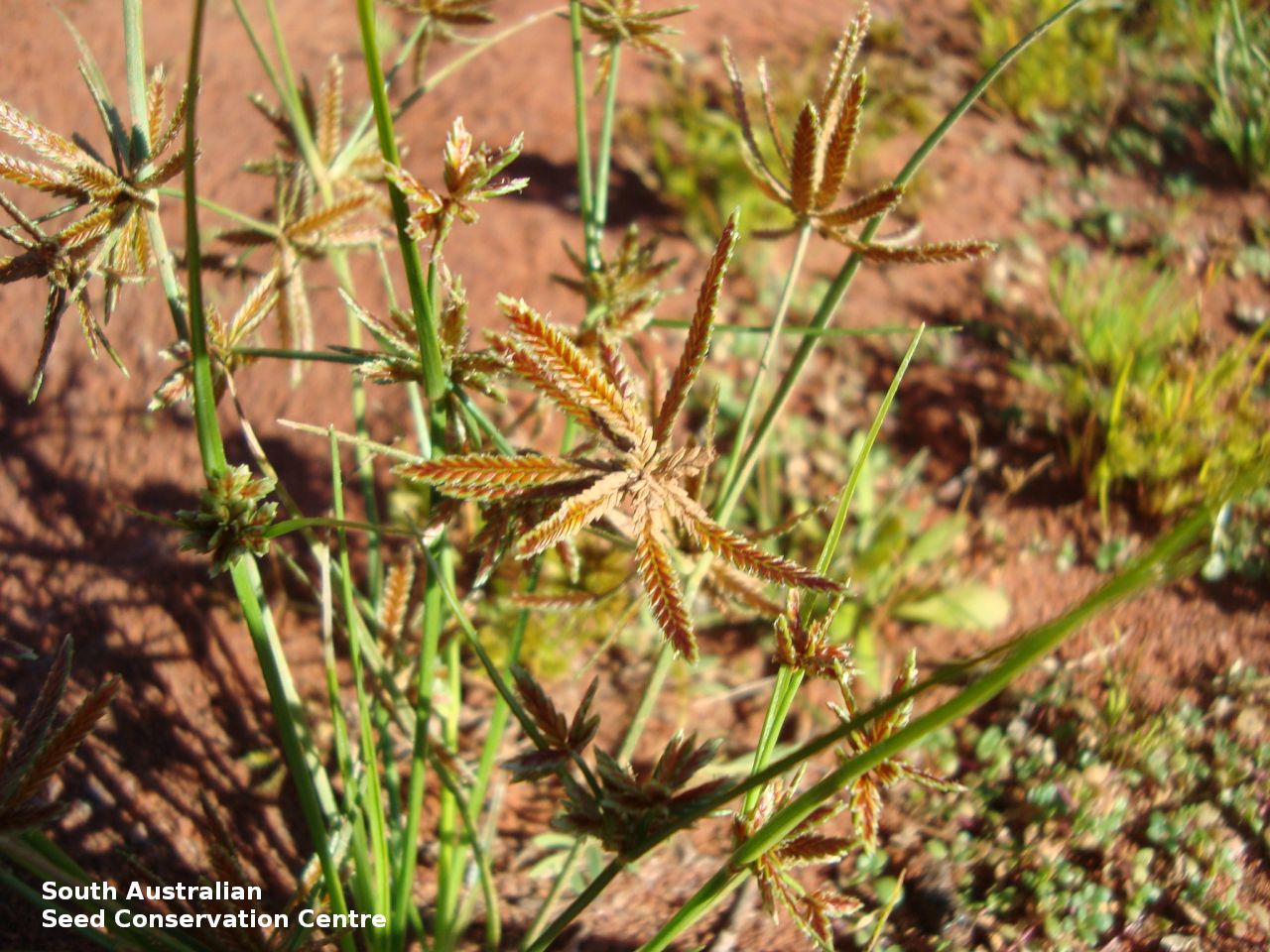
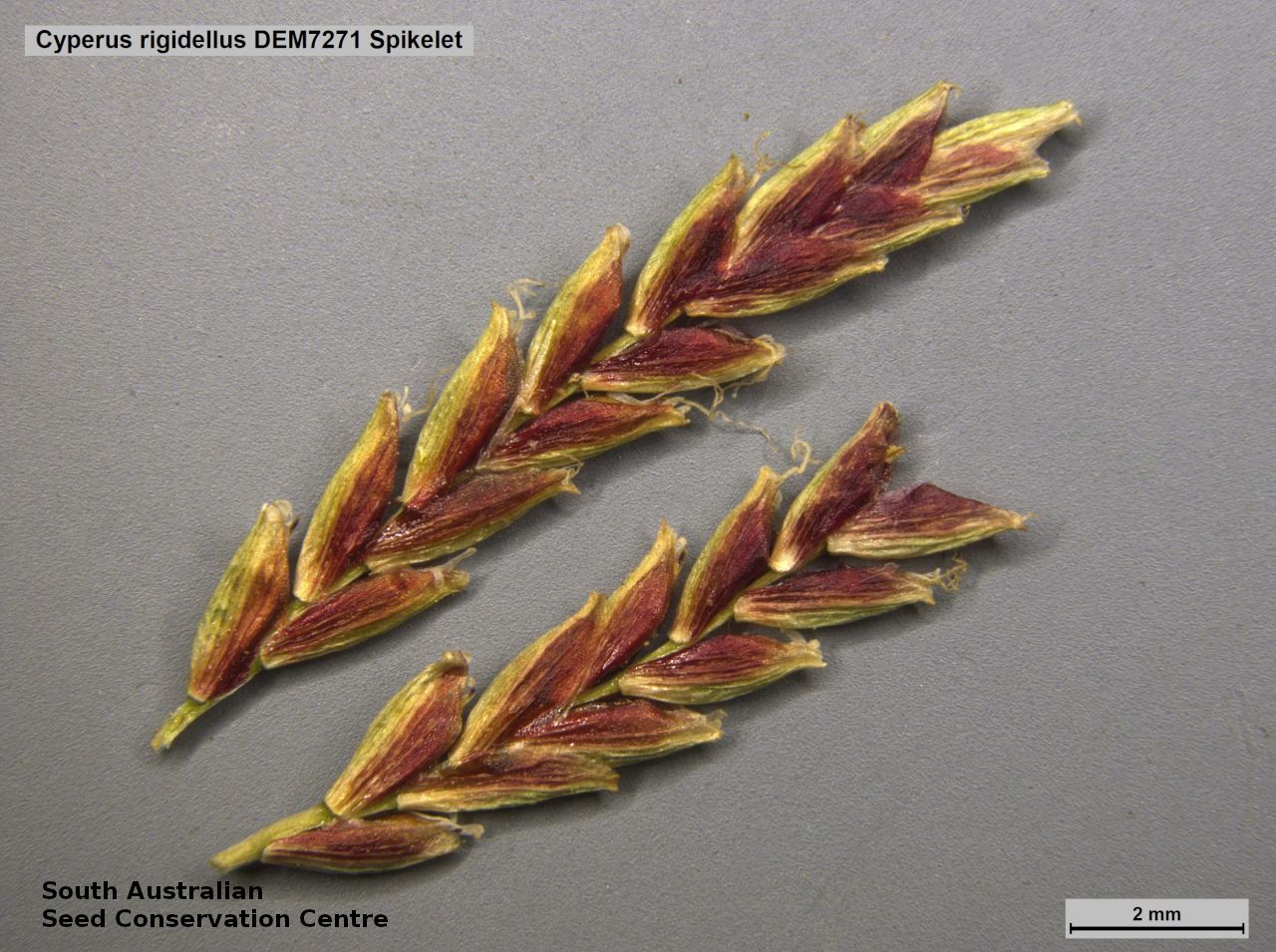
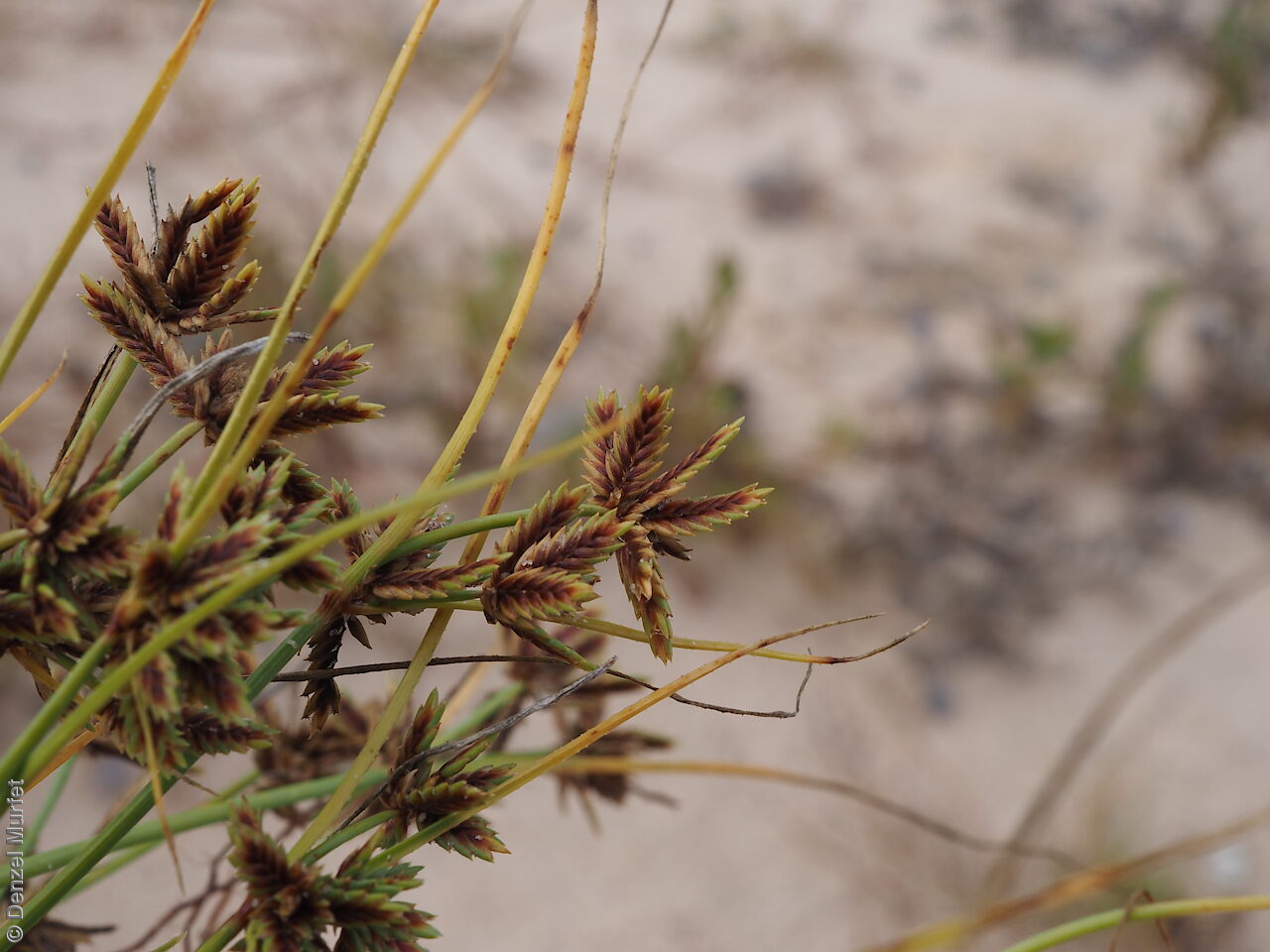
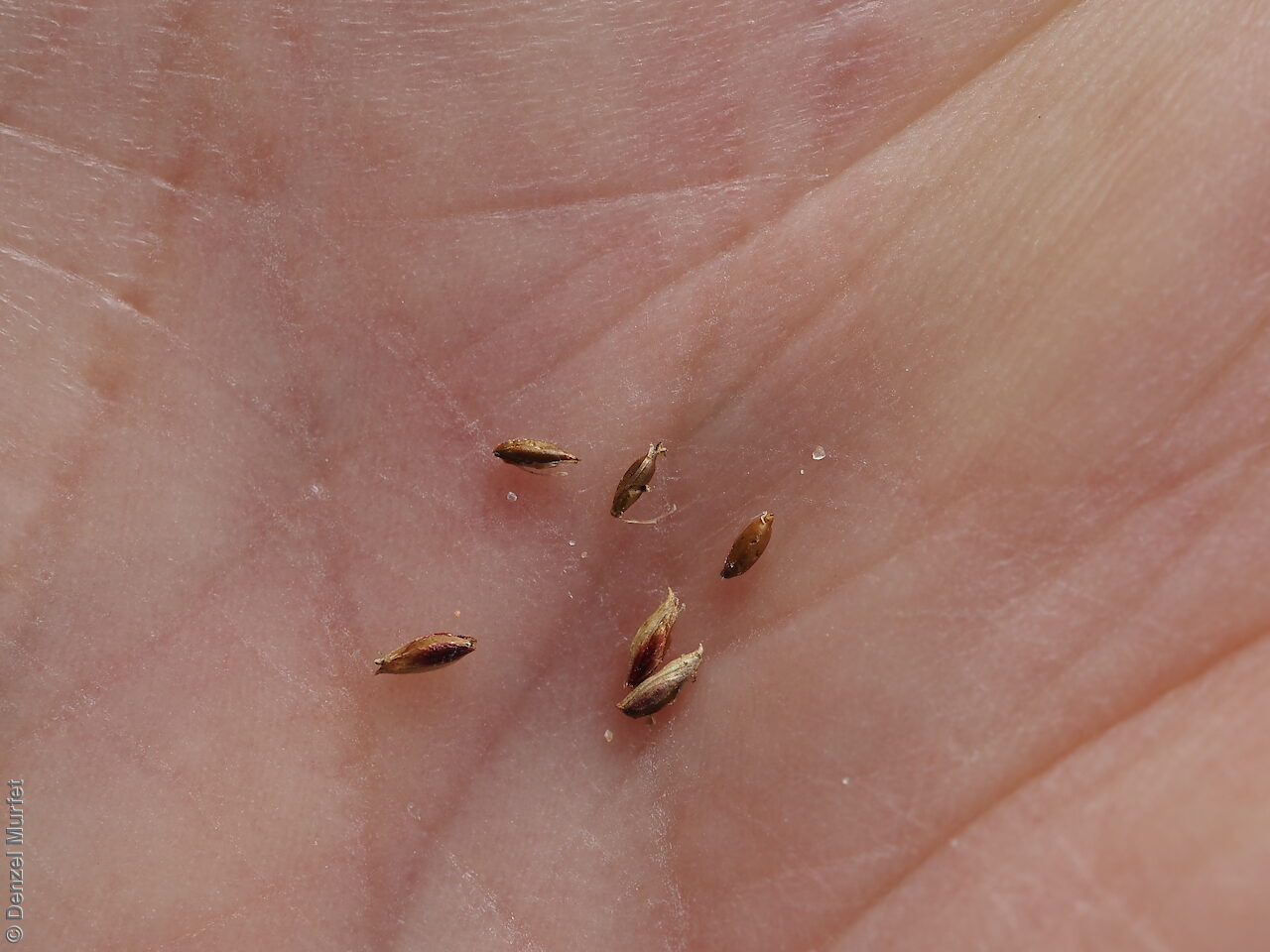
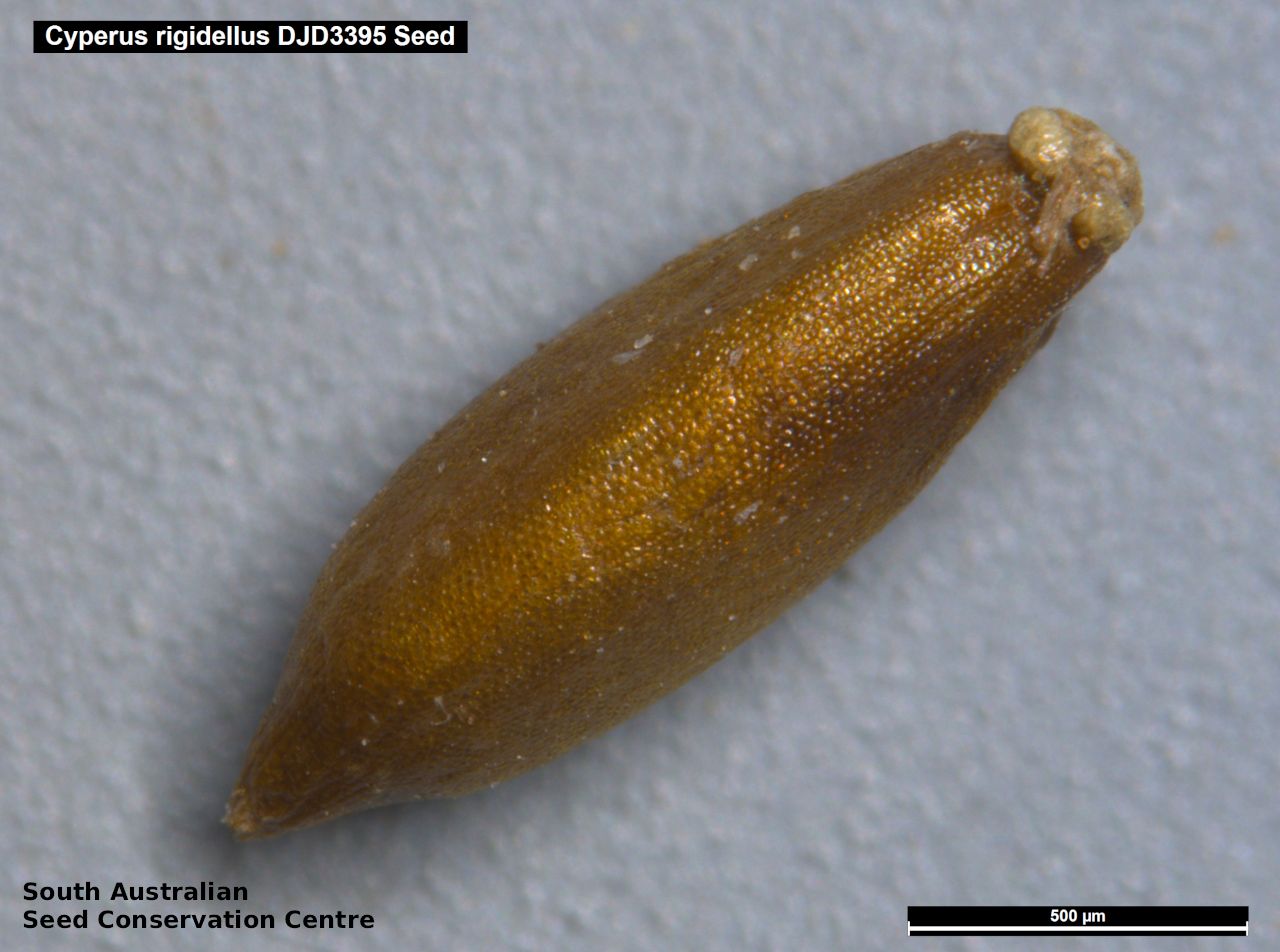
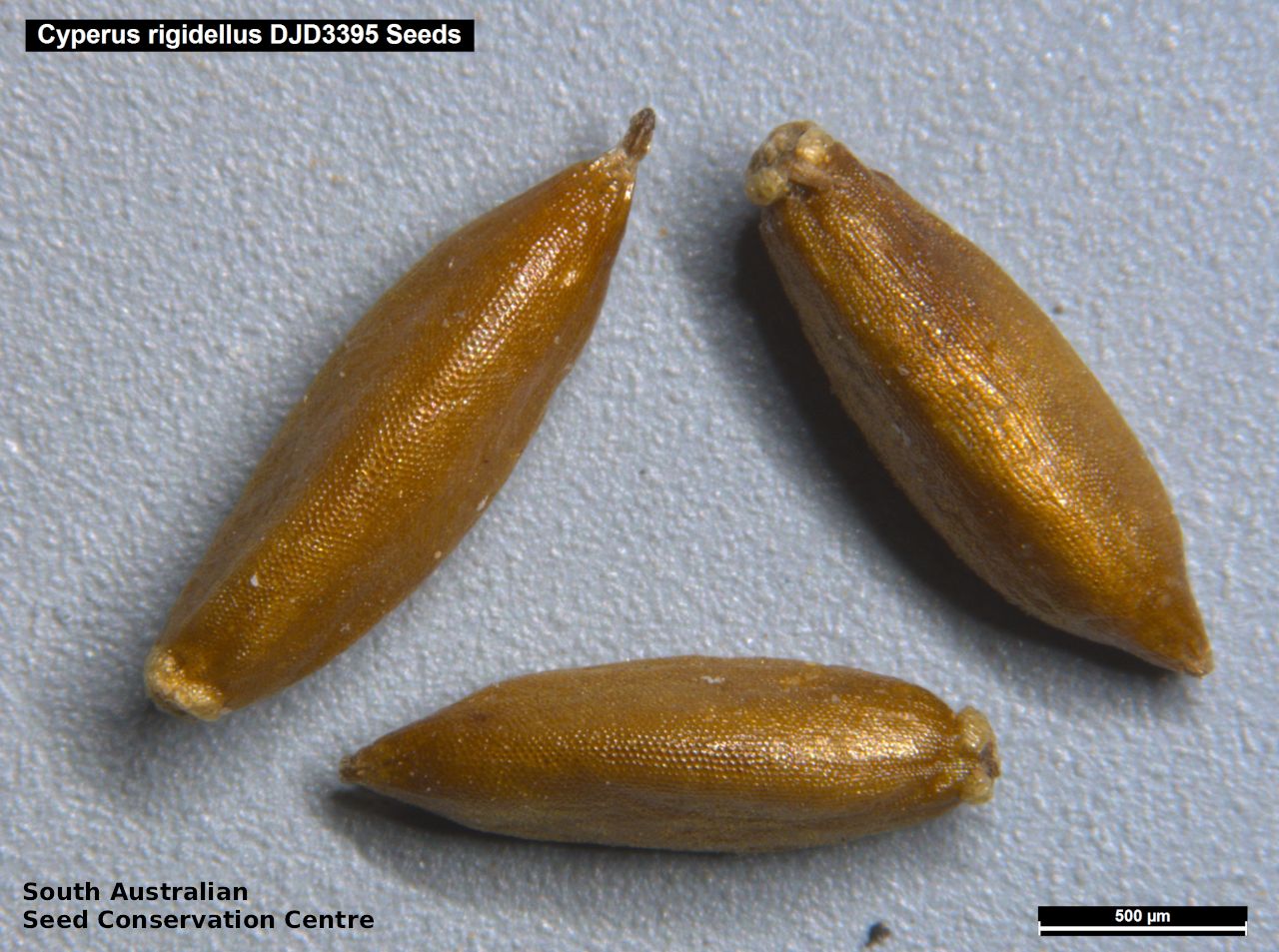
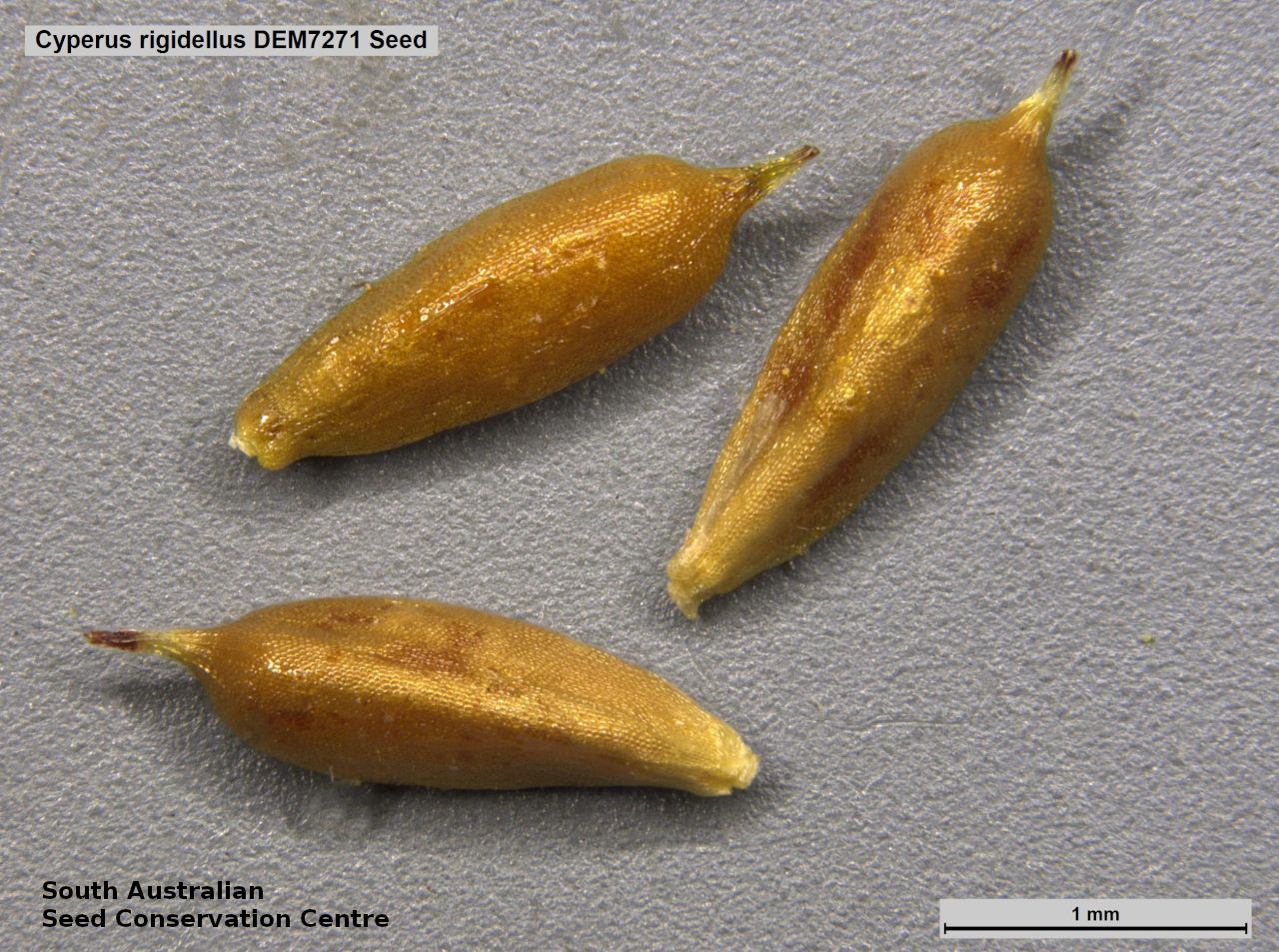

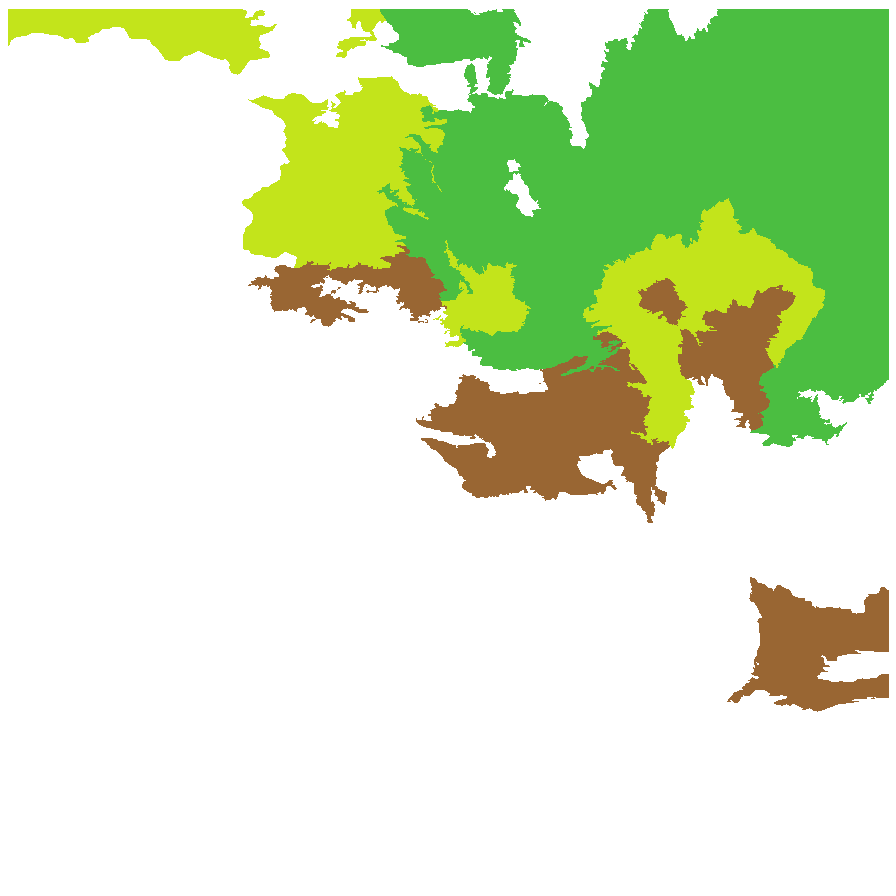
Prior names
Mariscus rigidellus
Cyperus gracilis var. rigidellus
Cyperus gracilis
Cyperus enervis
Common names
Curly Flat-sedge
Dwarf Flat-sedge
Etymology
Cyperus from the Latin 'cyperos' and derived from the Greek 'kypeiros', an ancient Greek name used by Homer and Theophrastus for several plants of this genus. Rigidellus means slightly or nearly rigid.
Distribution and status
Found in northern South Australia, north of the Murray River growing in ephemerally wet situations such as lake beds, floodways and roadside drains. Also found in all mainland States. Native. Common in South Australia. Rare in Victoria. Common in the other States.
Herbarium regions: North Western, Lake Eyre, Gairdner-Torrens, Flinders Ranges, Eastern, Eyre Peninsula, Murray
NRM regions: Alinytjara Wilurara, Eyre Peninsula, Northern and Yorke, South Australian Arid Lands, South Australian Murray-Darling Basin
AVH map: SA distribution map (external link)
Plant description
Tufted annual or perennial sedge to 25 cm high. Leaves mostly longer than stems, narrow to 2 mm wide. Flower-spike head-like or simple. Spikelets flattened to 25 mm long and 4 mm wide with 6–25-flowers. Flowering between March and September. Fruits are flat, golden brown fruit-head in clusters at tips of stems. Seeds are brown oblong, triangular seed to 1 mm long and 0.2 mm wide, with a tuberculate surface and covered in a thin whitish transparent layer. Seed embryo type is capitate.
Seed collection and propagation
Collect seeds between May and November. Collect fruits by picking off the mature heads, those turning golden brown colour and come-off easily. Place the heads in a tray and leave to dry for one to two weeks. Then rub the heads with a rubber bung to dislodge the seeds. Use a sieve to separate any unwanted material. Store the seeds with a desiccant such as dried silica beads or dry rice, in an air tight container in a cool and dry place. From one collection, the seed viability was high, at 100%.
| Location | No. of seeds (weight grams) | Number of plants | Date collected | Collection number Collection location | Date stored | % Viability | Storage temperature |
|---|---|---|---|---|---|---|---|
| MSB | 46,000 (1.57 g) | 100+ | 11-Mar-2007 | RJB70919 Gairdner-Torrens | |||
| BGA | 57,600 (2.1 g) | 9-May-2007 | RJB71705 Lake Eyre | 1-Aug-2007 | 100% | -18°C |
Number of plants: This is the number of plants from which the seeds were collected.
Collection location: The Herbarium of South Australia's region name.
% Viability: Percentage of filled healthy seeds determined by a cut test or x-ray.